How to play emulator games on Steam Deck with EmuDeck
You might have heard a lot about how the Steam Deck is a great emulation platform, but how do you actually set up and run an emulator? Let's look at how to play emulated games on the Steam Deck using EmuDeck.
Should you use EmuDeck to emulate games on the Steam Deck?
The first decision you need to make is which emulator to use. This guide chooses EmuDeck. For most users, this is an easy choice due to the convenience of the platform.
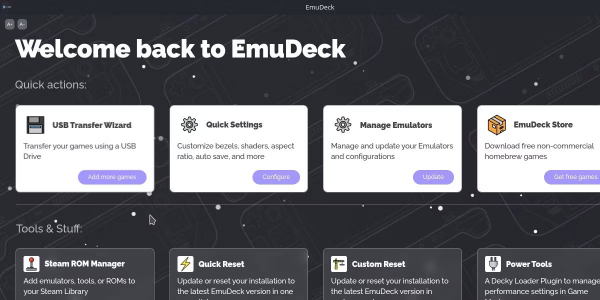
EmuDeck manages the installation and folder structure for the emulator. Remember, the Steam Deck uses a Linux-based OS by default, so having it manage these aspects for you can be very helpful.
There are several emulators you can use with the Steam Deck. But EmuDeck goes a step further and manages updates as well as third-party tool integration.
Does EmuDeck have any drawbacks? The main downside is you might end up installing more emulators than you intend to use. Fortunately, these can be uninstalled and pared down after the initial setup.
If you want to install emulators individually, you'll find most of them in the Discover store. If you like the sound of EmuDeck, the article will cover the next steps involved in setting it up.
How to Set Up EmuDeck on the Steam Deck
EmuDeck requires you to know how to use desktop mode before you can set it up. Before going further, make sure you're comfortable using the Steam Deck as a desktop device.
To start, switch to desktop mode by holding the power button and selecting Switch to Desktop.
1. Install and Set Up EmuDeck
After switching to desktop mode, you need to visit the EmuDeck website and download the installation package. Make sure you do this on your actual Steam Deck unless you're prepared to copy it from another device.
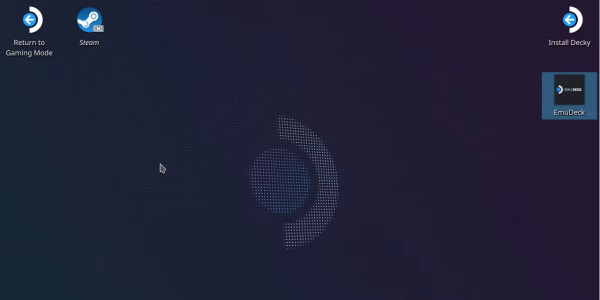
This package will need to be placed on the Steam Deck's desktop before you run it. You'll find this file in your Downloads folder unless saved elsewhere. Drag and drop this file onto the desktop. It's important to do this because the script won't run otherwise.
After running it, you'll see a warning asking if you're sure the file is safe. You can press Continue.
Several new windows might open during this process as the script downloads and installs core files. Eventually, you'll have two options: Install in Easy Mode or Custom Mode.
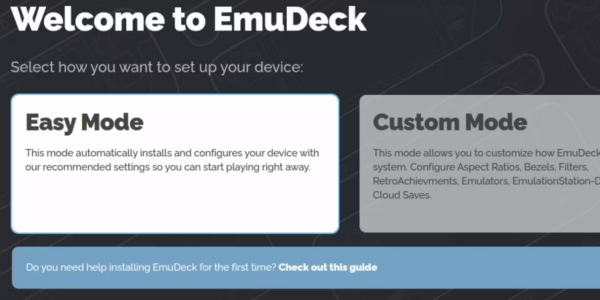
The article will choose Easy Mode as it's the simplest.
The remaining options are pretty straightforward. You'll have the choice to install EmuDeck on internal memory or an SD card. You'll also be provided with a list of emulators you want to install. Installing all of them will have minimal impact on storage, so feel free to do so if you want to avoid installing any emulators later.
After you select the emulators, the installation process is complete. Now, you have all the emulators ready and configured for the Steam Deck's control layout and hardware.
2. Move ROMs to EmuDeck
Next, you should familiarize yourself with the location of ROMs and any additional prerequisites, such as BIOS files.
Depending on where you installed EmuDeck, this Emulation folder will be in the Home directory or on the root directory of your SD card.
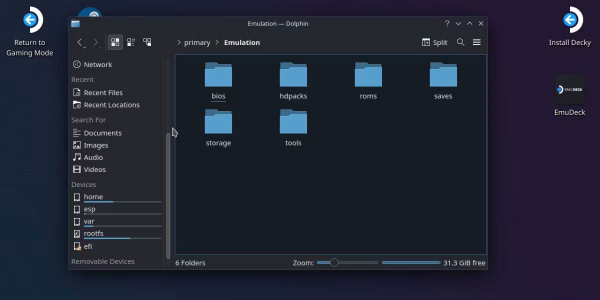
EmuDeck is configured so all emulators share this common folder. For example, the roms folder contains directories representing every console that can be emulated. If you copy a Nintendo Switch ROM into the Switch folder within roms, both Yuzu and Ryujinx can run that ROM.

You can check which folder is for which console by opening the system.txt file at the bottom. Additionally, there's a systeminfo.txt file in each folder containing information about the types of ROM files supported.
All BIOS files can also be in the same bios folder and read by any emulator that needs them. You can find out which system files are required by navigating back to the main screen of EmuDeck, clicking on Manage Emulators, and pressing Manage on any individual emulator.
Most emulators in EmuDeck contain the relevant system files, but some, like DuckStation, require you to source your own BIOS files.
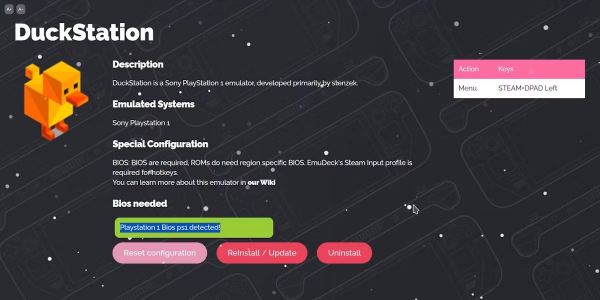
Remember, the Steam Deck doesn't have a native feature to transfer files from other devices. You'll need to use a hardware adapter to plug in storage devices like USB or alternative means to transfer files over.
Along with that, you have everything you need to start the emulation process. However, there's one more step to complete the Steam Deck emulation experience.
3. Add Emulators to the Steam Deck's Gaming Mode
So now you've installed a range of emulators. But you don't really want to boot into desktop mode every time you want to play them.
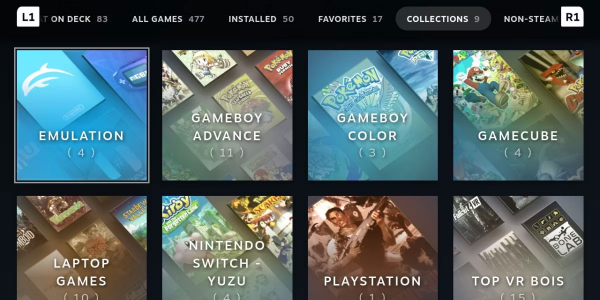
EmuDeck has its own solution for this issue. In the Tools & Stuff category on EmuDeck, you'll find something called Steam ROM Manager. Launch this option, making sure to press Yes on the warning notification.
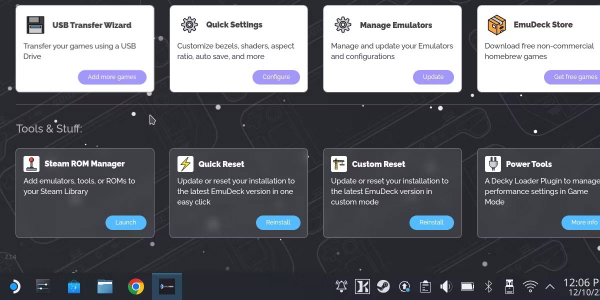
The Steam ROM Manager automates the process of adding shortcuts to your Steam library, meaning they can be launched from gaming mode. Specifically, it will scan your emulator library and add individual games as shortcuts.
This means you'll need to have copied your ROMs over before this option does anything. After doing so, you can easily press Preview > Parse.
A list of games will be created and if they're all there, you can press Save to Steam. The next time you boot into gaming mode, you'll find all your shortcuts in Non-Steam Games.
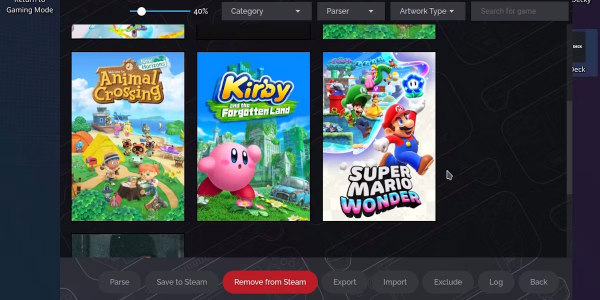
When you're ready to play an emulated game on your Steam Deck, just select the emulated game shortcut to start right away. If you launch a shortcut and an emulator appears instead, don't worry. It might take a few seconds to redirect from the emulator to the game.
While that might seem cumbersome, the big benefit of EmuDeck is that it can be set up and left alone. If you manage to get EmuDeck working, it will continue to work. This platform allows you to enjoy emulated games on the Steam Deck in a user-friendly way.
